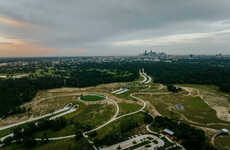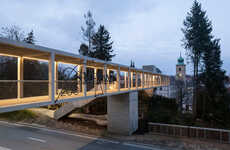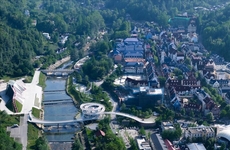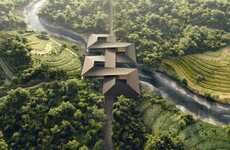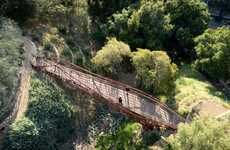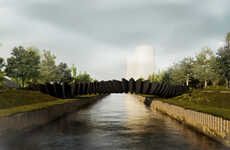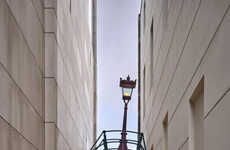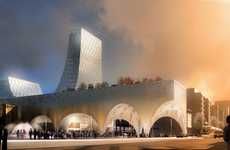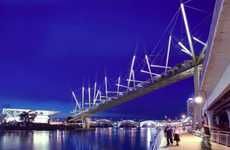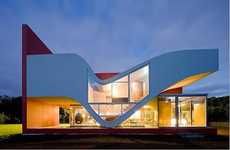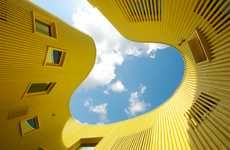
The Living Bridge Embodies the Energy of the City
Amelia Roblin — July 14, 2011 — Art & Design
References: evolo.us & designbuzz
Circulation studies are often undertaken when an architectural design process commences, and in a project like the Living Bridge, this research is visually discernible in the final product.
From afar, this tangled Tokyo overpass looks as if a host of giant spiders have spun thick webs around the existing structure, but in fact, every tousled string is a piece of data. Geoffrey Klein, Dave Eaton and Michael Wetmore mapped out the movement patterns of drivers, cyclists and pedestrians though a vector field, exaggerating the intensity of higher traffic trajectories to amplify the magnitude of the framework. The ultimate goal of the Living Bridge project was to formulate an intricate example of nonlinear algorithmic architecture, and at this, it certainly excels.
From afar, this tangled Tokyo overpass looks as if a host of giant spiders have spun thick webs around the existing structure, but in fact, every tousled string is a piece of data. Geoffrey Klein, Dave Eaton and Michael Wetmore mapped out the movement patterns of drivers, cyclists and pedestrians though a vector field, exaggerating the intensity of higher traffic trajectories to amplify the magnitude of the framework. The ultimate goal of the Living Bridge project was to formulate an intricate example of nonlinear algorithmic architecture, and at this, it certainly excels.
Trend Themes
1. Algorithmic Architecture - The Living Bridge project showcases the potential of nonlinear algorithmic architecture to create intricate designs.
2. Data-driven Design - The use of data visualization in the Living Bridge project highlights the trend towards data-driven design in architecture and infrastructure.
3. Traffic Pattern Analysis - The use of circulation studies and visual displays of traffic patterns is a growing trend in urban design and planning.
Industry Implications
1. Architecture - Opportunities for disruption in the field of architecture lie in the integration of algorithmic design and data-driven solutions.
2. Infrastructure - The Living Bridge project demonstrates innovative approaches to urban infrastructure that prioritize data analysis to optimize design.
3. Urban Planning - There is potential for disruptive innovation in the field of urban planning through the use of data-driven design and traffic pattern analysis to improve circulation and functionality.
4.6
Score
Popularity
Activity
Freshness



